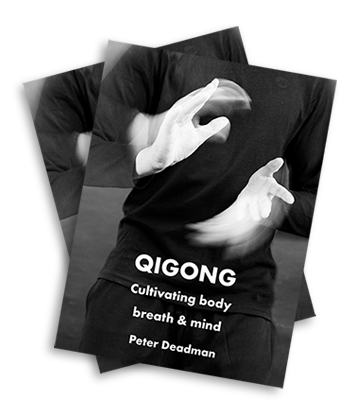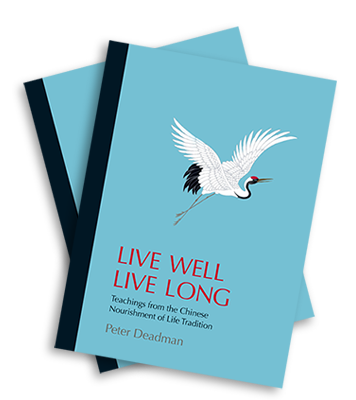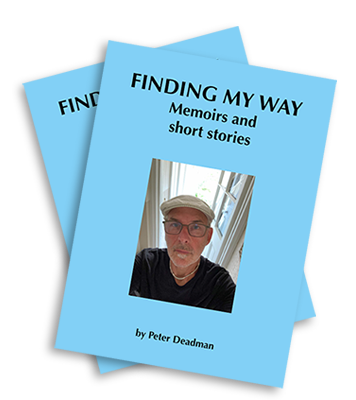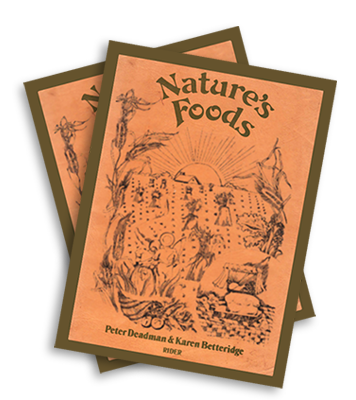
A Manual of Acupuncture
I was approached in 1990 by a publisher who proposed that I write an acupuncture points book. I declined because I thought that there were already too many on the market. Some time later I was talking to a friend who pointed out that there were so many because there was a significant demand. I then began to conceive the idea of a book which offered much more than anything then available.
The first step was to assemble a team. I ended up working with my close friend Mazin Al-Khafaji on the Chinese medicine portion of the book and with friend and colleague – Kevin Baker – on the point locations and illustrations. Mazin translated classical point indications from a variety of textbooks, as well as many discussions and quotations, and together we formulated the lengthy point commentaries which are at the heart of the book - meeting just about every week for eight years. The work that Kevin and I did was similarly exacting and I tried to be equally fastidious about every other aspect of the book – text, typography, illustrations, design, paper and binding.
While acupuncture is relatively new in the West, it has a 2000+ year history in China. Yet the traditional knowledge and discussions of the points and their application was relatively little known outside the Far East. We felt that for the art to develop in a sound way, it needed to know and respect its foundational roots and A Manual of Acupuncture was designed to do just that.
Since its its publication in 1998, A Manual of Acupuncture has been translated into several languages and has become the standard text throughout much of the world.
some reader reviews
Read all the reviews
Click below to expand and read reviews
The publication of A Manual of Acupuncture is a major event. We have here at last an in-depth, comprehensive and thoroughly researched English-language text on the locations, actions and indications of the points. I confidently predict that this book will rapidly join the small number of well used books which can be found on the shelves of any serious English- speaking practitioner of Chinese medicine, such as Maciocia's Foundations of Chinese Medicine and Bensky and Gamble's Formulas and Strategies.
A Manual of Acupuncture is worthy of such status because of the remarkable wealth of information it contains. This is clearly the result of years of in-depth research into both classical and modern literature, and this is borne out by an examination of the bibliography which includes 68 classical texts and 56 modern texts. These labours have resulted in a huge and remarkably comprehensive piece of work. We are treated for example to four pages of detail on ST-36, a page and a half on DU-4, and even a relatively minor point such as SI-7 merits more than a page of detail.
Accompanying the text are a huge number of remarkably clear illustrations. There is at least one illustration for every point, and some points have as many as three illustrations showing the bony anatomy, the bones plus tendons and muscles, and then the surface anatomy. The crisp and carefully drawn diagrams of the channels are pleasing to the eye and have just the right amount of detail. The illustrations of both points and channels are the best I have seen anywhere. As an additional visual treat, the names of every point and all the channels are accompanied by the Chinese characters in lovely calligraphy.
The book starts with chapters discussing channel theory, point categories, point selection methods, and point location and needling. The latter has a welcome emphasis on safe practice and detailed discussions of pneumothorax and needling close to major organs. The main body of the book then begins. Each channel system is dealt with in turn, starting with the courses and functions of the primary, luo-connecting, divergent and sinew channels.
Following this, each point is dealt with in turn. We are given the name in English, Pinyin and Chinese characters, followed by sections on location and needling. The point location information is concise but clearly the result of much study, discussion and thought, with the aim of producing the most practically useful description possible. The location descriptions are accompanied by helpful extra tips, such as for LU-5 "locate slightly lateral to the tendon rather than immediately next to it". At times the authors have taken quite bold and laudable decisions on point locations. For example, for HE-7 and LU-9 they say "since wrist creases are a superficial and variable anatomical feature, it is better to locate this point in relation to the underlying/nearby pisiform bone". The clarity and authority of the point location information will doubtless be welcomed by students and practitioners alike, but of course there are varying opinions about the locations of some points. An example is LIV-5, which some texts clearly locate over the tibia not behind it, or Anmian, which is sometimes given several different locations. In these cases I would have welcomed more discussion from the authors as to what methodology they followed to settle on the location they have given. Perhaps this will make a separate journal article?
After the point location information comes the point actions and then a detailed list of indications. These are taken mostly from classical texts and have been helpfully arranged into groups of related indications. The indications of the points are of course of immense clinical value. The authors say in their introduction that the attribution of actions to points is mostly a twentieth century practice, but one clearly based on the classical indications. However, I believe they are right to draw our attention to the importance of also studying the indications themselves. As they say "the more indications there are, the easier it is to form an impression of the nature and forte of each point".
Following the indications, for each point there is a lengthy and detailed commentary. These commentaries are one of the book's greatest strengths, and a source of new inspiration for even the most experienced of practitioners. We learn for example that HE-8 is indicated in the classical texts more for lower jiao heat and that upper jiao heat with mental agitation and insomnia is emphasised much more in the indications for P-8 or P-7. We learn that KID-7 is strongly indicated for oedema, for sweating, and for lower jiao damp-heat, but not for impotence. The traditional indications for BL-58 strongly emphasise its use for excess patterns in the upper body. KID-4 firstly reinforces and regulates the relationship between Kidney and Lung, secondly has a strong action on the emotions like many lug-connecting points, and has among its indications "desire to close the door and remain at home". The commentaries on the points are full of references to classical discussions and contain a wealth of detail on pattern differentiation, pathological mechanisms and point combining, so that when studying the uses of a particular point one is also deepening one's understanding of broader topics.
The sections on each individual point conclude with a list of point combinations, again taken mostly from classical sources. The combinations have been well selected in that they make sense to a modern practitioner and they address symptom patterns seen in our clinical practice.
After more than 500 pages of detail on the channels and on each point in turn, including extra points, there are a series of excellent illustrations showing the major points of different areas of the body, from the eye region and the side of the head to the top of the foot. These illustrations are beautifully executed and show the surface anatomy in a realistic way so that one can immediately appreciate the relationships between the points in an area.
The thoroughness and attention to detail continues with a good glossary and excellent indexes. The indications index allows the reader to look up a symptom such as cough and find a wealth of detail, including cough with stubborn phlegm, SI-12, and cough with redness and heat of the face, SJ-6. The general index enables one to find the parts of the text where there are discussions of specific topics, from abdominal masses to window of heaven points.
This is a large book of 667 pages and given the regular use I'm sure it will receive from practitioners it is good to know that it has an attractive cover and is solidly bound. I understand there will also be available a large box of point cards, one for each point, which will have the illustration, location, actions and a precis of the most important uses of the point. These cards should be very useful for students and should also sit nicely in the clinic.
The overall impression is of a book put together throughout with impressive scholarship, loving care and attention to detail. I am sure this will rapidly become a major set text at acupuncture colleges throughout the English-speaking world, and the great "quantity" and detail of the information mean that it is also an essential text for practitioners.
Richard Blackwell
"The most scholarly, complete and detailed book on points to date; a must for any student and practitioner. The definitive and most authoritative book on points in the English language".
Giovanni Maciocia
"Finally! It's about time this book was published! For 25 years I've been dancing among French, English, American and Anglo-Chinese compilations of the functions and indications of the points. No single source, nor combination of sources, can match the thoroughness of A Manual of Acupuncture. My teaching has suddenly been made easier".
Joseph Helms, MD, Founding President, American Academo of Medical Acupuncture
"If Chinese medicine is a treasure house, this book is a large treasure chest overflowing with glittering jewels. The clarity of the illustrations is particularly striking. Authoritative, thoroughly researched, and filled with detailed information of great clinical value, this is a 'must-have' book for students and practitioners alike".
Richard Blackwell, Academic Dean, Northern College of Acupuncture, York, England
"The scope and depth of this book, together with its truly wonderful illustrations, make it a 'must have' for any student or practitioner who is serious about the study of acupuncture".
Dan Bensky
"This is truly a well produced, thoughtfully prepared and exhaustively researched book. There is something for everyone. For the student and teacher it is an invaluable aid to learning; for the scholar and the practitioner it will be the work of reference. All will be excited and pleased by the level of excellence achieved by the authors".
Geoff Wadlow, President of The London School of Acupuncture & TCM
"We are deeply impressed by this absolutely outstanding work".
Verlag fuer Ganzheitliche Medizin
"I love your book. It has everything a College Principal would want in recommending a text. For students it will become their ultimate reference manual that will last them their working lives. Your new book really is an outstanding contribution to the field of Chinese medicine. Its level of scholarship is exceptionally high with very full referencing of sources. It is a fantastic book".
Hugh MacPherson, Principal Northern College of Acupuncture, York, England
"My first choice as an instructional text for channels and points".
Paul Karsten, Seattle Institute of Oriental Medicine
"This is an indispensable book for any acupuncturist's library and clinic, an incredible source of knowledge, user-friendly, clear and free from obscurity. From student to practitioner to teacher, this is a book to grow with".
Dr. Reuven Barak, Israel
"The book is essentially a description of each and every one of the 360 or so primary acupuncture points of Traditional Chinese Medicine. There is a good bit of material about methodology of point selection, but the real gem of this book is the intelligent and thorough descriptions of the points, their properties, and how to locate and needle them. The reason that I gave the book five stars is that it is far more complete and logical in its point descriptions than any of the Chinese texts used by my acupuncturist, a Chinese chiropractor who was a medical doctor Shanghai for eight years before coming to the US and becoming a chiropractor. Often when a discipline is translated from one language and culture to another, the highly systematized translation is more complete and sensible than the eclectic literature corpus upon which it is based. Those who devised this book have created a phenomenally comprehensive synthesis of over 3,000 years of Chinese medical tradition. They have taken on a monumental task and succeeded brilliantly. The quality of this reference is so high that I would even recommend it to practitioners from the orient who are coming to the US or other English-speaking countries to start a practice. First, it will it help them learn the English vocabulary of acupuncture jargon and help them understand our butchered pronunciations of the many Chinese words in an English acupuncturist's vocabulary. Second, they will be able to better communicate their activities to their patients. Finally, the book is as high a quality reference as anything they will have brought with them from Asia."
Jonathan Bailey (posted on Amazon)
"Students of TCM, don't let the price tag intimidate you, and let me assure you that it is worth every penny. This hefty and handsome volume leaves nothing unsaid, and meticulously provides detailed information, plenty of informative quotes from a wealth of classical sources, and is a joy to handle, browse, and read from. Of particular interest and value are the sections which describe the special point groupings, because they not only provide the lists of points which belong to these categories, but also systematized and coherent explanations behind the workings of cleft-xi, yuan-source, luo-connecting, and many other point categories. Also of great value are the commentaries pertaining to each individual point, because they describe relationships and important pointers regarding the workings of each individual point, how their use and indications developed through history, and other tidbits of information which will open new avenues of investigation and application for astute students and practitioners. The commentaries on the points provide not only information, but are written in a lucid prose, the style of which aids memorization and learning of important information.
The point location information is accurate, albeit in a few cases too brief, in my opinion. The illustrations are very detailed and actually useful (unlike in other texts) in locating the points. The notes and cautions on needling of points in sensitive areas are placed where they are readily visible, and provide information on the local anatomy of the point, and what the consequences of inappropriate insertion could be.
There are charts which show major points per anatomical region (which are actually legible and understandable), and indexes aplenty: pinyin and chinese point names, english point names, and a particularly interesting point indications index. There is also a Glossary of the Wisemanese-seeming terminology used by the authors, which although similar to that of A Practical Dictionary, is not exactly the same.
Should you buy this book? ABSOLUTELY!!! You will never need another acupoint book, EVER. There is a companion set of Point cards by the same authors, which uses the same illustrations and a summary of point information based on the contents of the book. One word of advice, though: if it stays standing on the shelf for too long, the pages tend to sag. However, given the amount of use this book has, that's unlikely to happen."
Cintain (posted on Amazon)
"Deadman and colleagues should be commended for this major contribution to the English-language literature of Chinese medicine. It does what it does exceedingly well. It does so, in part, because of what it is not.
It should be understood that the Manual is chiefly an atlas and desk reference of acupuncture points and channels, not a classroom textbook or a clinic handbook or a self-study guide per se, though it does list some illustrative combinations with each point. Other books are available that fill the role of textbook better than this one does. This one's audience is the person who already knows something of the foundations and clinical applications of acupuncture.
The manual is not encyclopedic when compared with the larger Chinese-language works of acupuncture, but it does draw on them in a concise and informative way that conveys the character, historic application and contemporary application of each point, using carefully selected information from a wide range of primary sources. Accordingly, it could be viewed more as a work of editorship than of creativity, and in a reference work of this sort, that is exactly what is desired.
It often goes unmentioned, but Deadman is zealous in his ongoing support of his publications. Errata and updates are available, for free, from his web site. The Manual is also available in CD-ROM format, and Deadman has even produced flashcards based on the substance of the Manual.
The illustrations are in fact of excellent quality, some of the best ever in a book of this sort. Pair the illustrations with the detailed treatment of point location and application, great typography, durable construction, and well-chosen excerpts from primary sources ranging from ancient to modern, and you have an acupuncture reference you can use to deepen your knowledge for years to come."
Jeffrey Chapman (posted on Amazon)
"The Manual of Acupuncture by Peter Deadman is the ULTIMATE Acupuncture Book that is a necessity for every acupuncture student and practitioner. With 670 illustrated pages, this book is worth every penny. The newest version of this book is also tabbed by channels - so it is much easier to find information. While I was a student, I didn't always carry this book with me because it was so big. However, I did photocopy the anatomical point charts and indications lists from the back of the book to aid my clinical point selections.
Now as a practitioner (this booked definitely helped me pass NCCAOM exams), I refer to this book often to take my acupoint knowledge to the next level and to provide more comprehensive treatment plans.
Buy this book now! If you are a TCM student, I also highly recommend the companion FLASH CARDS by Deadman. They make it easy to study acupuncture points with a location/illustration on one side of the card and actions/indications on the other."
Dr. Julie Gorman (posted on Amazon)
"How very much easier it would have been studying Chinese medicine twenty years ago had I had access to texts of the calibre of A Manual of Acupuncture. Thanks to an extremely lucid and accessible layout, locating any meridian pathway or point is straightforward and, unlike some of the previous English language acupuncture texts, this manual describes uses and combinations of points which are based on reputable and classical sources. Added to this are extensive commentaries on the clinical uses and history of each point - particularly interesting based as they are on not only ancient and modern texts but also the experience of the authors themselves (spanning some several decades amongst them) in acupuncture clinics in the West. The authors of A Manual of Acupuncture have demonstrated a high level of scholarship, integrity and thoroughness in their task of collating a huge wealth of information from many sources and have produced a superb text that describes all the meridian pathways, all the acupuncture points and nearly all the [possible ways they can be used and the reasons why."
Jane Lyttleton, Australia
"A reviewer should declare his bias at the outset. My heart was won as soon as I read the introduction to A Manual of Acupuncture, which states "with a tradition as lengthy and unique as that of Chinese medicine, it is important first to establish what the tradition actually is, so as to innovate with care and respect". There is no doubt that we in the West are heroic innovators, but surely this should be based on thorough understanding of the fundamental tradition before we begin tinkering.
Well, here is the most complete rendering of the fundamental tradition of Chinese acupuncture point information that I have yet seen in English.A Manual of Acupuncture will certainly become the standard textbook for acupuncture in the Western world, since its comprehensiveness and lucidity beg for translation into the other major European languages. Unlike many textbooks, however, it will not be discarded after exams, for it is also an encyclopaedic reference on channels and points that will be utilised throughout the practising life of the graduate.
Although much of the information is available in Chinese, nowhere is it compiled, collated and as easily retrieved as in this volume, and the discussion of each point function under the 'Commentary' sections are excellent, and can be found nowhere else.
This commentary section is perhaps the most unique aspect to the book, each well-thought out and illuminating, reflecting what a well-educated Chinese specialist in acupuncture may have achieved in the understanding of each point, but only after many years of comparative study of the Classics. Yet here it is, all presented for us, in total, in one spot! Very hard to come by.
The point cards are wonderfully useful, primarily due to their portability. I had a Chinese set during my early studies in Taiwan that eventually became dog-eared through continual residence in, and draggings-forth-from, various pockets. Whether learning the points for the first time, or going over the set to renew old but forgotten acquaintances, the addition of these point cards is a tremendous contribution to acupuncture learning in English.
My only reservations were unworthily selfish. While looking over the very comprehensive contents, I suddenly had a sinking feeling. Horrors! Here were acupuncture point-selection methods I thought were well locked up in my Chinese 'secrets' box, all paraded in naked English for anyone to read! Now my only chance is to improve my needling skills!
The only thing we need now to round out the acupuncture curriculum is a text of equal quality setting forth the extensive literature on acupuncture needling techniques. Gosh, are we never satisfied?"
Steve Clavey
Take a sneak peak at what's inside the book
VIEW PREVIEWPurchase Options
This book is available in many different formats from the following authorised distributors. To find out more about A manual of Acupuncture click here.



